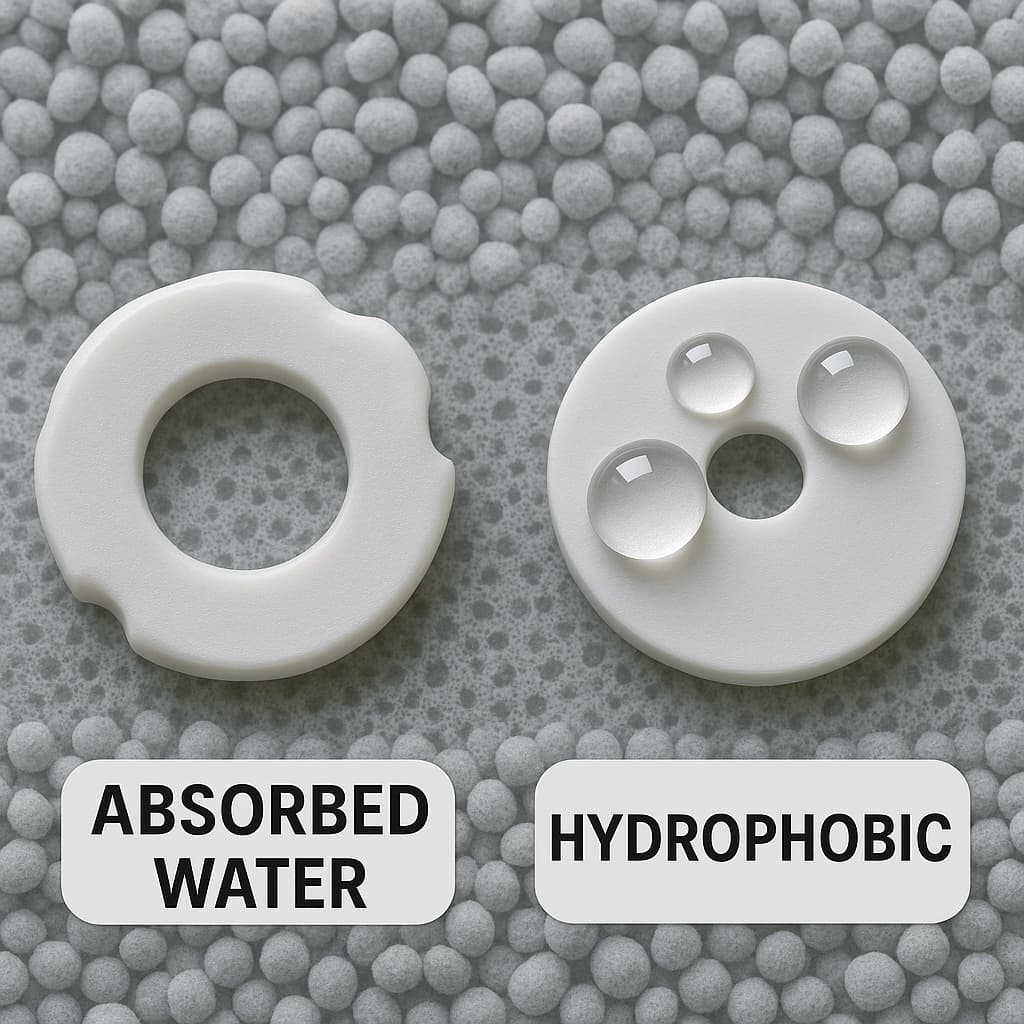Nylon, as one of the most important engineering plastics, has been widely used in automotive, electrical and mechanical manufacturing fields due to its excellent mechanical strength, wear resistance and chemical corrosion resistance. However, the high water absorption characteristics of nylon materials have become a key bottleneck limiting its application in precision engineering. The saturated water absorption rates of nylon 6 and nylon 66 can reach 9.5% and 8.5% respectively, which originates from the hydrogen bonding between polar amide groups (-CONH-) in molecular chains and water molecules. When environmental humidity changes, nylon products will expand due to water absorption or shrink due to water loss, seriously affecting the assembly accuracy and service performance of parts.
In engineering practice, the primary method to improve the dimensional stability of nylon is to add inorganic fillers for reinforced modification. Glass fiber is the most commonly used reinforcing material. Adding 30%-50% glass fiber can reduce the water absorption of nylon by 40%-60%, while significantly improving its mechanical strength and heat deflection temperature. Although carbon fiber is more expensive, it can not only reduce water absorption but also endow materials with conductivity and higher rigidity. In recent years, nano-scale fillers such as montmorillonite and talc have attracted widespread attention. These nano-fillers can significantly slow down the water absorption rate by prolonging the diffusion path of water molecules in materials. Studies show that adding 5% organically modified montmorillonite can reduce the water absorption of nylon 6 by more than 30%.
Chemical modification is a fundamental method to solve the water absorption problem of nylon at the molecular structure level. Through end-capping technology, using reagents such as anhydride or isocyanate to react with amino or carboxyl groups at the end of nylon chains can effectively reduce active sites for hydrogen bonding with water molecules. Epoxy resin modification can introduce cross-linked structures between nylon molecular chains, which not only reduces water absorption but also improves the heat resistance and dimensional stability of materials. Radiation cross-linking is another effective chemical modification method. Through electron beam or γ-ray irradiation, a three-dimensional network structure is formed between nylon molecular chains, which can control water absorption below 3%. The cross-linked nylon material developed by Ube Industries is a typical case of successful application of this technology.
Polymer blending is an important way to improve the dimensional stability of nylon. Blending nylon with hydrophobic polymers such as polyolefins (PP, PE) or polyphenylene sulfide (PPS) can significantly reduce the overall water absorption of composite materials. However, due to the poor compatibility between these polymers and nylon, compatibilizers are usually needed to improve interfacial bonding. Maleic anhydride grafted polyolefin is the most commonly used compatibilizer, which can react with the terminal amino groups of nylon to form chemical bonds at the interface. The Zytel series products developed by DuPont in the United States have achieved excellent dimensional stability through this technology and are widely used in precision components such as automotive fuel systems and electronic connectors.
Surface treatment technology provides another solution to improve the dimensional stability of nylon. Plasma treatment can introduce hydrophobic groups on the material surface to form a water barrier. Fluorocarbon coating and silane coupling agent treatment can construct superhydrophobic structures on the nylon surface, making the water contact angle reach more than 150°. The fluorinated nylon material developed by Daikin Industries in Japan can reduce water absorption to 1/3 of ordinary nylon. These surface treatment technologies are particularly suitable for application scenarios that need to maintain substrate performance while requiring low water absorption, such as precision gears, bearings and other mechanical parts.
In practical engineering applications, appropriate modification schemes need to be selected according to specific use environments and performance requirements. For the high temperature and humidity environment in automobile engine compartments, a comprehensive scheme combining glass fiber reinforcement and chemical cross-linking is usually adopted; electronic connectors are more often selected with a combination of mineral filling and surface treatment; while medical devices often need to adopt nano-composite materials with better biocompatibility. With the progress of materials science, new modification technologies such as in-situ polymerized nanocomposites and ionic liquid modification continue to emerge, providing more possibilities to solve the water absorption problem of nylon. Through continuous material innovation and process optimization, nylon materials will surely gain wider applications in more high-precision fields.
